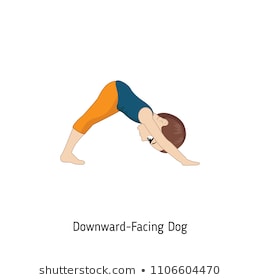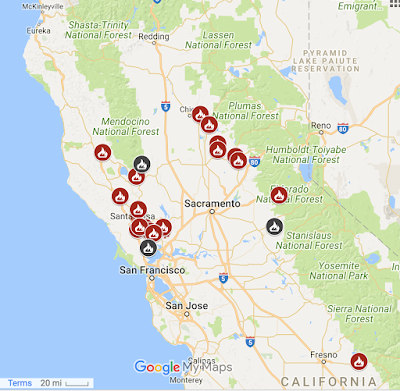Contribution by Wrangler Bridget Byrne
Travel around the world with... YOGA!
Yoga is the ancient Indian physical and mental discipline that involves meditation, mindfulness, and specific body postures. Below is an activity in which students can travel around a classroom or home to complete yoga poses that connect to a country.
Of course we can’t travel to all the countries in one day, so let's start with 10 stations to place around a large space. These activities can be incorporated into a number of lessons to engage kinesthetic learners. Yoga is also a great way to help students relax and refocus after recess or gym class!
*All of these poses can be modified to be easier for students of every skill level and ability.

Canada’s pose is the bear pose! There are three species of bears native to Canada: grizzlies, polar, and black bears. Today, almost 20,000 bears live in Canada!
 |
| Bear Pose |

The United States’ pose is eagle pose! The eagle was chosen to be America’s national emblem over 200 years ago!
 |
| Eagle Pose |
Mexico’s pose is the downward dog pose! The Xoloitzcuintle, or Xolo dog is native to Mexico. These dogs are hairless and love warm weather.
 |
| Downward Dog Pose |
Chile’s pose is the flamingo pose! Chile is home to many different landforms including mountains and deserts. The Chilean flamingo lives in the Atacama desert! Flamingos are pink because of the red and pink pigments in the food they eat.
 |
| Flamingo Pose |
Kenya’s pose is the giraffe pose. Kenya is a country in East Africa.There are around 12,000 giraffes in Kenya.
 |
| Giraffe Pose |
Egypt’s pose is the camel pose. Egypt is a country in the north east part of Africa. In ancient Egypt, camels were used to travel long distances across the Sahara.
 |
| Camel Pose |
Spain’s pose is the cow pose! In Spain, bull runnings (male cattle) are a common celebratory event each year.
 |
| Cow Pose |

China’s pose is tiger pose! South China Tigers are an endangered species in China and need to be protected. Tiger Pose Variation 2
 |
| Tiger Pose |

India’s pose is the rhino pose. India is the country where Yoga originated from. The greater one-horned rhino originated from India and is an endangered species. Its scientific name refers to the single horn: Rhinoceros unicornis!
 |
| Rhino Pose |
Australia’s pose is the kangaroo pose! Kangaroos are only found in Australia. They have strong legs that allow them to jump everywhere.
 |
| Kangaroo Pose |
Thinking Globally: How many continents are represented by these ten countries? Can you find a pose to include the remaining continent?



























